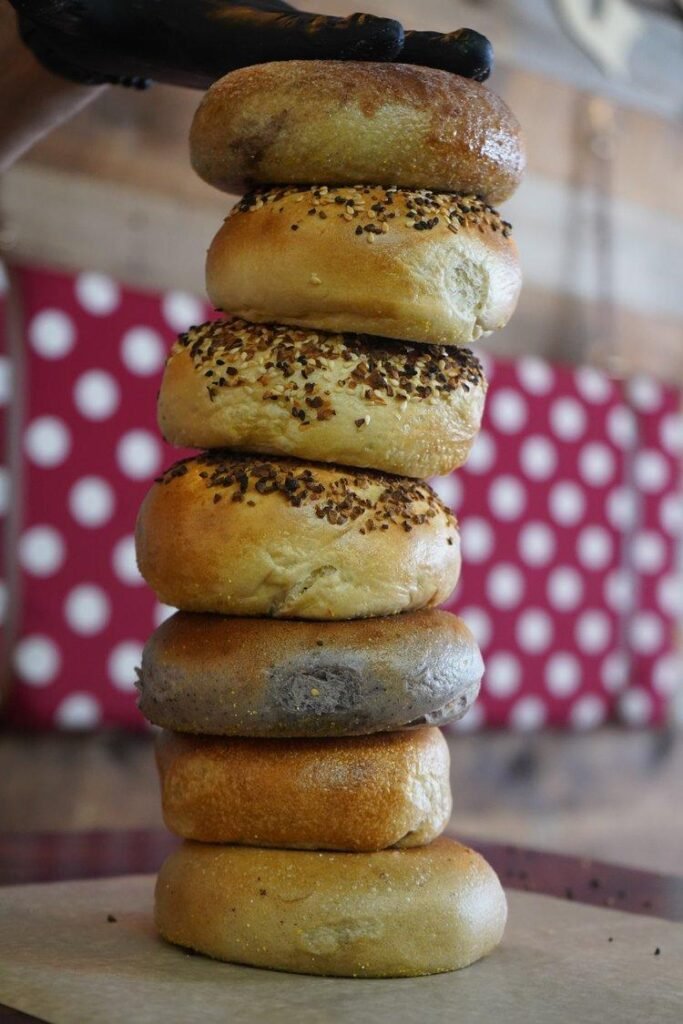What Makes The Best Bagels? The Essential Ingredients Behind Perfect Bagels

Bagels are beloved around the world for their unique texture and flavor. Whether you enjoy them plain, topped with cream cheese, or piled high with lox, the secret to the best bagels Las Vegas lies in its ingredients and preparation.
Understanding what goes into making the best bagels can elevate your appreciation for this classic bread. Let’s explore the key ingredients that create the perfect bagel.
Flour
Flour is the base of any bread product, and it’s no different for bagels. However, the type of flour used makes all the difference. High-gluten flour is the gold standard for bagel-making because it gives the dough the strength and elasticity it needs.
This type of flour contains more protein than all-purpose flour, which results in the chewy texture that defines a classic bagel. Without enough gluten, bagels turn out too soft and lack the necessary density and bite.
The quality of the flour also matters—using freshly milled, high-quality flour can elevate the flavor and overall texture significantly.
Water
It’s no coincidence that New York bagels have a legendary reputation. Many bagel enthusiasts believe that the city’s tap water plays a crucial role in achieving that perfect balance of crisp exterior and soft interior.
The mineral content and pH level of the water can affect how the dough behaves, impacting the final product’s taste and texture.
Some bagel makers outside of New York try to replicate the water’s properties by adjusting their own water’s mineral balance to create a similar effect.
Yeast
Yeast gives the dough life, creating air pockets that give bagels structure. Bagel recipes typically use commercial active dry yeast or sourdough starter for fermentation. Active dry yeast is reliable and easy to control, resulting in a more consistent rise and flavor.
On the other hand, sourdough starter, due to natural fermentation, introduces a more complex, tangy flavor, giving bagels a slightly rustic touch.
Regardless of the type used, proper fermentation time is crucial for developing depth of flavor and the right texture.

Sweeteners
Sweeteners in Bagels Las Vegas enhance flavor rather than making the dough noticeably sweet. Traditional bagel recipes use malt syrup or barley malt powder, which adds a distinct, almost caramel-like depth.
These ingredients help brown the crust during baking and contribute to that recognizable bagel flavor.
Some variations use honey, sugar, or molasses as alternatives, but malt remains the preferred choice for an authentic taste.
Salt
Salt may seem like a small component, but it’s essential for both flavor and dough structure. It strengthens the gluten network, ensuring that the bagel has a firm yet elastic consistency.
Additionally, salt balances the sweetness from the malt and brings out the subtle flavors of the flour and fermentation process. Too little salt results in bland bagels, while too much can overpower the delicate flavor balance.
The Boiling Process
One of the defining characteristics of a bagel is its shiny, chewy crust. This texture is achieved by boiling the bagels before baking them.
Boiling gelatinizes the outer layer of the dough, creating a barrier that locks in moisture and gives the bagel its dense, chewy bite.
Some bagel makers add malt syrup, honey, or baking soda to the boiling water to enhance the crust’s color and flavor. Skipping this step will result in something more akin to bread rolls, lacking the distinctive bagel texture.
Toppings
Toppings are the final flourish that transforms a basic bagel into something memorable. The classics—sesame seeds, poppy seeds, onion flakes, and coarse salt—never go out of style.
For an iconic “everything bagel,” a combination of these toppings creates a flavor-packed experience. More contemporary bagel varieties push the boundaries with toppings like sun-dried tomatoes, jalapeños, and asiago cheese.
Regardless of the choice, pressing the toppings firmly onto the bagels before baking is essential to ensure they adhere properly.
Baking
Once the bagels have been boiled and topped, they’re ready for the oven. To achieve their ideal texture, bagels require a hot, high-temperature bake.
Professional bagel bakers often use stone hearth ovens, which radiate intense heat and create a crispy crust while keeping the inside moist and chewy.
For home bakers, a preheated baking stone or a cast-iron skillet can replicate that effect. Timing is everything—bake too long, and the bagels become dry; bake too short, and they lack the necessary crunch.
Conclusion
Creating the best bagels is both an art and a science. Each ingredient plays a vital role in the overall flavor and texture of the final product. Every step, from the choice of flour to the boiling process, is important in crafting a delicious bagel.
Next time you enjoy a bagel, take a moment to appreciate the key ingredients that make it special. Whether you’re making them at home or visiting Abel’s Bagels, understanding these elements can deepen your appreciation for this beloved food.






